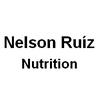
The role of black soldier fly (BSF) in sustainable broiler nutrition

- Genetic selection programs to enhance BSF larvae protein and fat content and profiles.
- AI-driven monitoring systems to optimize BSF farming and processing efficiency.
- Standardising the substrate for BSFrearing to insure a constant production and nutritional value.
- Scalability for industrial production and ensuring competitive pricing of BSF meal and fat.
Altmann B.A., Neumann C., Velten, S., Liebert F., Mörlein D., (2018). Meat quality derived from high inclusion of a micro-alga or insect meal as an alternative protein source in poultry diets: A pilot study. Foods., 7, 34.
Dabbou S., Gai F., Biasato I., Capucchio M.T., Biasibetti E., Dezzutto D., Meneguz M., Plachà I., Gasco L., Schiavone A., (2018). Black soldier fly defatted meal as a dietary protein source for broiler chickens: Effects on growth performance, blood traits gut morphology and histological features. J. Anim. Sci. Biotechnol., 9, 49.
De Smet J., Wynants E., Cos P., Van Campenhout L., (2018). Microbial community dynamics during rearing of black soldier fly larvae (Hermetia illucens) and impact on exploitation potential. Appl. Environ. Microbiol., 84, 02722-17.
FAO, (2009). How to Feed the World in 2050.
INRAe, Feedtables. (https://www.feedtables.com/)
IPIFF, (2022). Guide on good hygiene practices for European Union (EU) producers of insects as food and feed. IPIFF online platform. (https://ipiff.org/wp-content/uploads/2019/12/IPIFF-Guide-on-Good-Hygiene-Practices.pdf)
Leiber F., Gelencsér T., Stamer A., Amsler Z., Wohlfahrt J., Früh B., Maurer V., (2017). Insect and legume-based protein sources to replace soybean cake in an organic broiler diet: Effects on growth performance and physical meat quality. Renew. Agric. Food Syst., 32, 21-27.
Meneguz M., Schiavone A., Gai F., Dama A., Lussiana C., Renna M., Gasco L., (2018). Effect of rearing substrate on growth performance, waste reduction efficiency and chemical composition of black soldier fly (Hermetia illucens) larvae. J. Sci. Food Agric., 98, 5776-5784.
Onsongo V.O., Osuga I.M., Gachuiri C.K., Wachira A.M., Miano D.M., Tanga C.M., Ekesi S., Nakimbugwe D., Fiaboe K.K.M. (2018). Insects for income generation through animal feed: Effect of dietary replacement of soybean and fish meal with black soldier fly meal on broiler growth and economic performance. J. Econ. Entomol., 11, 1966-1973.
Pieterse E., Erasmus S.W., Uushona T., Homan L.C. (2019). Black soldier fly (Hermetia illucens) pre-pupae meal as a dietary protein source for broiler production ensures a tasty chicken with standard meat quality for every pot. J. Sci. Food Agric., 99, 893-903.
Schiavone A., Cullere M., De Marco M., Meneguz M., Biasato I., Bergagna S., Dezzutto D., Gai F., Dabbou S., Gasco L., et al. (2017). Partial or total replacement of soybean oil by black soldier fly larvae (Hermetia illucens L.) fat in broiler diets: Effect on growth performance, feed-choice, blood traits, carcass characteristics and meat quality. Ital. J. Anim. Sci., 16, 93-100.
Schiavone A., Dabbou S., De Marco M., Cullere M., Biasato I., Biasibetti E., Capucchio M.T., Bergagna S., Dezzutto D., Meneguz M., et al. (2018). Black soldier fly larva fat inclusion in finisher broiler chicken diet as an alternative fat source. Animal, 12, 2032-2039.
Schiavone A., De Marco M., Martínez S., Dabbou S., Renna M., Madrid J., Hernandez F., Rotolo L., Costa P., Gai F., et al. (2017). Nutritional value of a partially defatted and a highly defatted black soldier fly larvae (Hermetia illucens L.) meal for broiler chickens: Apparent nutrient digestibility, apparent metabolizable energy and apparent ileal amino acid digestibility. J. Anim. Sci. Biotechnol., 8, 897-905.
Image
Microbial community dynamics during rearing of black soldier fly larvae ( Hermetia illucens ) and its impact on exploitation potential - Scientific Figure on ResearchGate. Available from: https://www.researchgate.net/figure/Life-cycle-of-H-illucens-The-different-stages-of-the-development-of-H-illucens-are_fig1_323367595 [accessed 7 Apr 2025]







